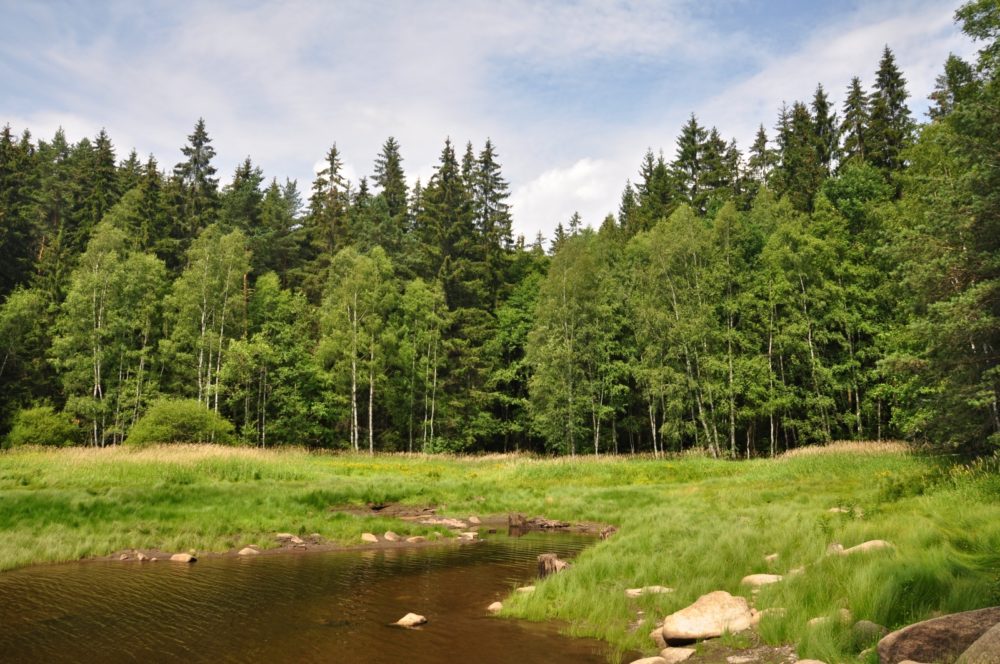FGMRI’s (VÚLHM) opinion on the “Plan for healthy forests” prepared by the “Duha” movement
The Forestry and Game Management Research Institute (FGMRI) welcomes the publication of the “Plan for Healthy Forests” by the “Duha” movement. This material presents a summary of measures proposed by this environmental non-governmental organization “to achieve diverse and resilient forests”. We consider it as a legitimate and reasonably specific stimulus for the discussion of legislative norms related to forestry in the Czech Republic.
The introduction of the material is quite alarmist, which can be expected and perhaps even accepted given the nature of the presenter. As much as we do not idealize the current state of forests in the Czech Republic and in Central and Southern Europe in general, and as much as we perceive the high risks represented by ongoing global change, we consider the statement that “the health status of trees is the worst in the Czech Republic and France” to be misleading (see press release https://1url.cz/@tisk_zprava_ICP_FPRESTS). Natural regeneration in the Czech Republic in recent decades has been in the range of 15-20%, not 5%, as stated by the authors (see https://1url.cz/@Zelena_zprava_2021, p. 25). However, we also consider an increase in the proportion of natural regeneration to be desirable. The impact of sulphur on forests is a legacy that forest soils carry mainly from the course of the pollution calamity in the twentieth century. Unfortunately, there is no cure for this historical burden – apart from perhaps the use of liming and fertilizing the stands in the most affected areas. Forest management must deal with forest soils all the more sensitively and protect the very low reserves of basic nutrients from further degradation.
 The material includes a number of vague terms that are not defined by legislation or the authors, which makes it difficult to have a substantive discussion. Examples of these vague terms include “risky trees”, “unnatural trees”, “dense forests”, and “forest type”. In some cases, current legislative provisions and possibilities are neglected or misinterpreted, and required measures can already be carried out according to current legislation and rules. There seems to be a contradiction between demands to relax and simplify legislation on the one hand (e.g. measures 8, 9, 13, 14, 16, etc.) and demands for new strict restrictions on the other hand (e.g. measures 10, 11, 17, 21, etc.). There is also a clash of ideas, such as the strict limitation of clear cutting to 0.3 hectares versus the requirements for the cultivation of “light forests” and the support of “cleared areas”.
The material includes a number of vague terms that are not defined by legislation or the authors, which makes it difficult to have a substantive discussion. Examples of these vague terms include “risky trees”, “unnatural trees”, “dense forests”, and “forest type”. In some cases, current legislative provisions and possibilities are neglected or misinterpreted, and required measures can already be carried out according to current legislation and rules. There seems to be a contradiction between demands to relax and simplify legislation on the one hand (e.g. measures 8, 9, 13, 14, 16, etc.) and demands for new strict restrictions on the other hand (e.g. measures 10, 11, 17, 21, etc.). There is also a clash of ideas, such as the strict limitation of clear cutting to 0.3 hectares versus the requirements for the cultivation of “light forests” and the support of “cleared areas”.
The “Plan for Healthy Forests” proposes 43 measures that aim to improve the state of our forests. While some measures appear beneficial, others are inadequate or based on incorrect assumptions. In some cases, proposed measures may even pose risks to the future development of forests and forestry. Therefore, we have prepared comments on each proposal. We acknowledge that some proposals fall within the realm of other professional institutions, particularly the Forest Management Institute (Ústav pro hospodářskou úpravu lesů), and some are more of a political or forest owner decision.
In general, we agree with:
- Effective measures should be taken to reduce animal damage in forests.
- Maximum suppression of the sika deer population in the wild is necessary.
- All economic methods of forest management, including the method of collection, should be equalized.
- The natural renewal of forests should be strengthened.
- Growing diverse forest ecosystems (genetically, species-wise, age-wise and spatially) should be supported.
- The retention, hydric and water management functions of forests should be strengthened.
- Agroforestry systems on agricultural land should be encouraged.
- Simple and understandable rules for forest owners should be established.
The following measures are considered completely inappropriate:
- Removing protected species from the list of game.
- Cancelling deadlines for afforestation and renewal of areas.
- Prohibiting milling and chipping activities without exceptions.
- Allowing grazing and raking of litter in forest stands.
- Relaxing legal provisions for forest protection from calamitous pests by implementing a non-interference policy.
- Limiting significantly the use of non-native and introduced tree species while regulating their use to a reasonable extent.
- Introducing a “protection” policy, which involves no intervention for overgrown forest stands of the same age at a flat rate.
All text of the „FGMRI’s (VÚLHM) opinion“with individual proposed comments can be downloaded here.
“Plan for healthy forests” prepared by the “Duha” movement can be found here.
